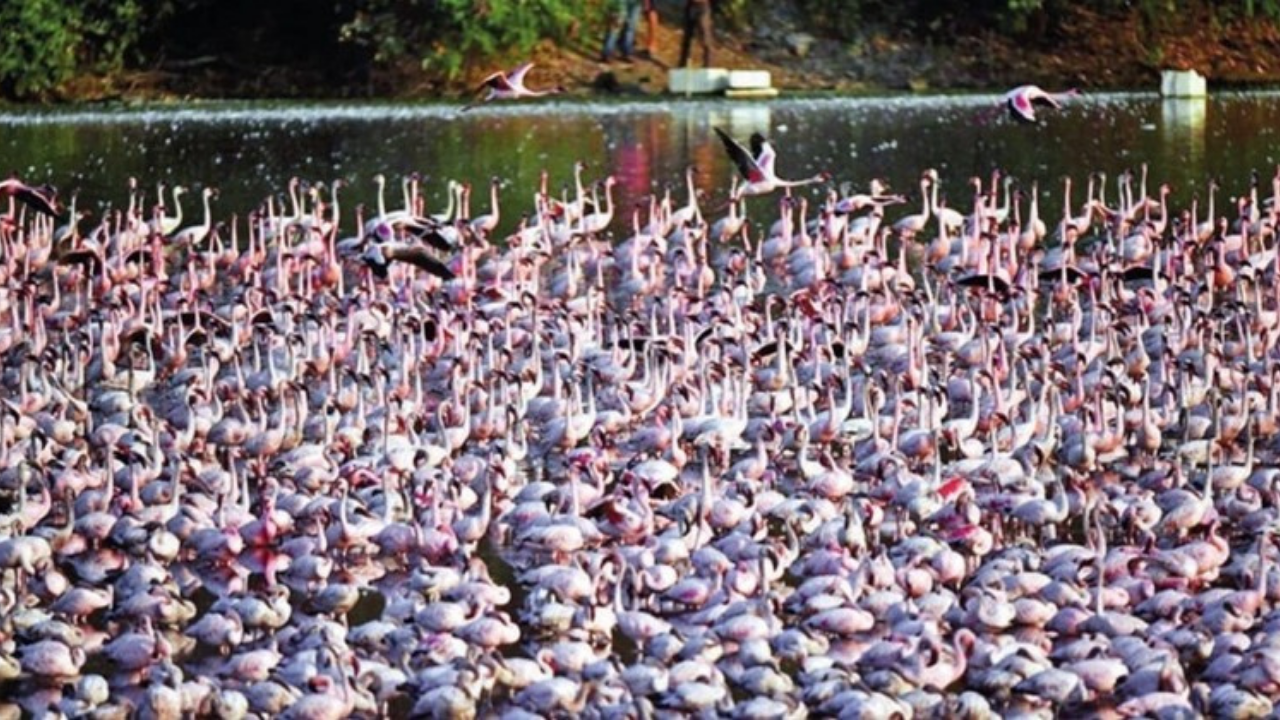
NAVI MUMBAI: MMR areas such as Sewri and Thane creek saw a record 1.33 lakh flamingos in April-May this year, say researchers from the Bombay Natural History Society and Mangrove Foundation. The figure is much higher than last year’s observation of 1.03 lakh birds here.
Experts are divided on the reason for the rise in the numbers this year. While some attribute it to the increase in blue-green algae, which the birds feed on, in the creek areas due to pollution, others say the numbers may have seen a rise due to shrinking wetlands and mangroves in places like Uran—this has resulted in them being concentrated in parts like Sewri.
However, what environmentalists agree on is the only way to ensure the presence of the pink visitors is to stop destruction of their habitats.
“Over the years, the Thane Creek Flamingo Sanctuary (TCFS) has reported the sighting of over 1 lakh flamingos, including this year’s record. We intend to protect these migratory birds and their habitat for posterity. We had proposed Ramsar site (wetlands of international importance) certification for TCFS and the CM has cleared it,” additional principal chief conservator of forests, Mangrove Cell, Virendra Tiwari said.
Bombay high court-appointed wetland protection committee member D Stalin said, “Since there are frequent reports and complaints about the destruction of wetlands and mangroves in Uran and Navi Mumbai which are visited by the greater and lesser flamingos, it’s likely that a large flock has congregated at the Thane creek and Sewri. Finally, what matters is that their natural habitats must be preserved.”
Of the six species of flamingos, two are found in India —the tallest of them, the greater flamingo and the smallest, the lesser flamingo.
Between December 2021 and March 2022, TCFS witnessed 54,000 greater flamingos, while Sewri and Nhava saw 17,000 and 227. Juvenile (5%) and sub-adult (21%) figures were lower than those of adults in all 3 places.
BNHS deputy director Rahul Khot said, “Greater flamingos prefer freshwater and estuary environments, which Mumbai offers thanks to its creeks and inland wetlands. Also, the food they may be getting may make this ecosystem appealing to them.” However, activist Debi Goenka cautioned that care must be taken to stop industrial pollution leak into sea creek.







